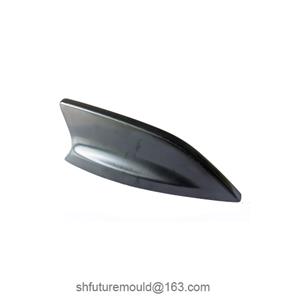Mold Protection Methods in Injection Molding
Protecting molds during injection molding not only extends their lifespan but also enhances production efficiency and product quality. Below are several practical mold protection methods:
1. Equipment Adjustment and Standardized Operation
Set mold protection parameters: Adjust the low-pressure protection function of the injection molding machine to prevent damage caused by high-pressure mold closing.
Standardize mold opening and closing operations: Ensure moderate speeds for opening and closing to avoid impact damage due to excessive force.
Install mechanical limit protection: Use limit switches or similar devices to prevent mold damage caused by exceeding travel limits.
2. Mold Design Protection Measures
Implement guiding systems: Design high-precision guide pins and bushings to ensure alignment during mold opening and closing, reducing wear from misalignment.
Add cushioning devices: Incorporate cushioning pads or pillars in impact-prone areas to minimize shock forces on the mold.
Optimize venting systems: Design venting holes strategically to prevent gas residue that could cause carbon deposits or burns on the mold surface.
3. Raw Material Management
Ensure material cleanliness: Remove impurities and hard particles from raw materials to prevent damage to runners and cavities.
Stabilize material composition: Avoid using mixed or excessive recycled materials, as chemical reactions may accelerate mold corrosion.
4. Optimizing the Mold Operating Environment
Control mold temperature: Maintain a consistent mold temperature to avoid damage from thermal expansion or contraction due to large temperature fluctuations.
Use appropriate cooling fluids: Ensure the cooling system operates smoothly to prevent overheating and thermal stress that could lead to localized damage.
5. Cleaning and Lubrication Maintenance
Regularly clean the mold: Remove residual plastics, grease, or debris from the cavity to prevent corrosion or clogging of runners.
Lubricate moving parts: Regularly apply lubricant to areas such as guide pins, bushings, and sliders to minimize friction and wear.
Prevent oxidation and rust: Coat the mold surface with rust inhibitors or anti-corrosion oils, especially when stored in high-humidity environments.
6. Safety Protection Devices
Install mold protection monitoring systems: Use infrared sensors or pressure detectors to monitor for foreign objects in the cavity, preventing accidental damage during mold closing.
Set misoperation protection features: Configure the injection machine to prevent unintended actions during mold opening or closing.
7. Routine Inspections and Maintenance Protocols
Regularly inspect mold conditions: Check for wear on critical components such as sliders and gate inserts, replacing worn parts promptly.
Record mold lifespan: Maintain mold usage logs to track production cycles, maintenance schedules, and repair histories.
Repair damages promptly: Address cracks or defects as soon as they are identified to prevent further issues.
8. Storage and Transportation Protection
Disassemble and store molds properly: After production, clean the mold, apply rust inhibitors, and store it in a dry, ventilated area.
Use transportation protection measures: Apply shock-proof packaging during transportation to avoid damage from collisions or external forces.




